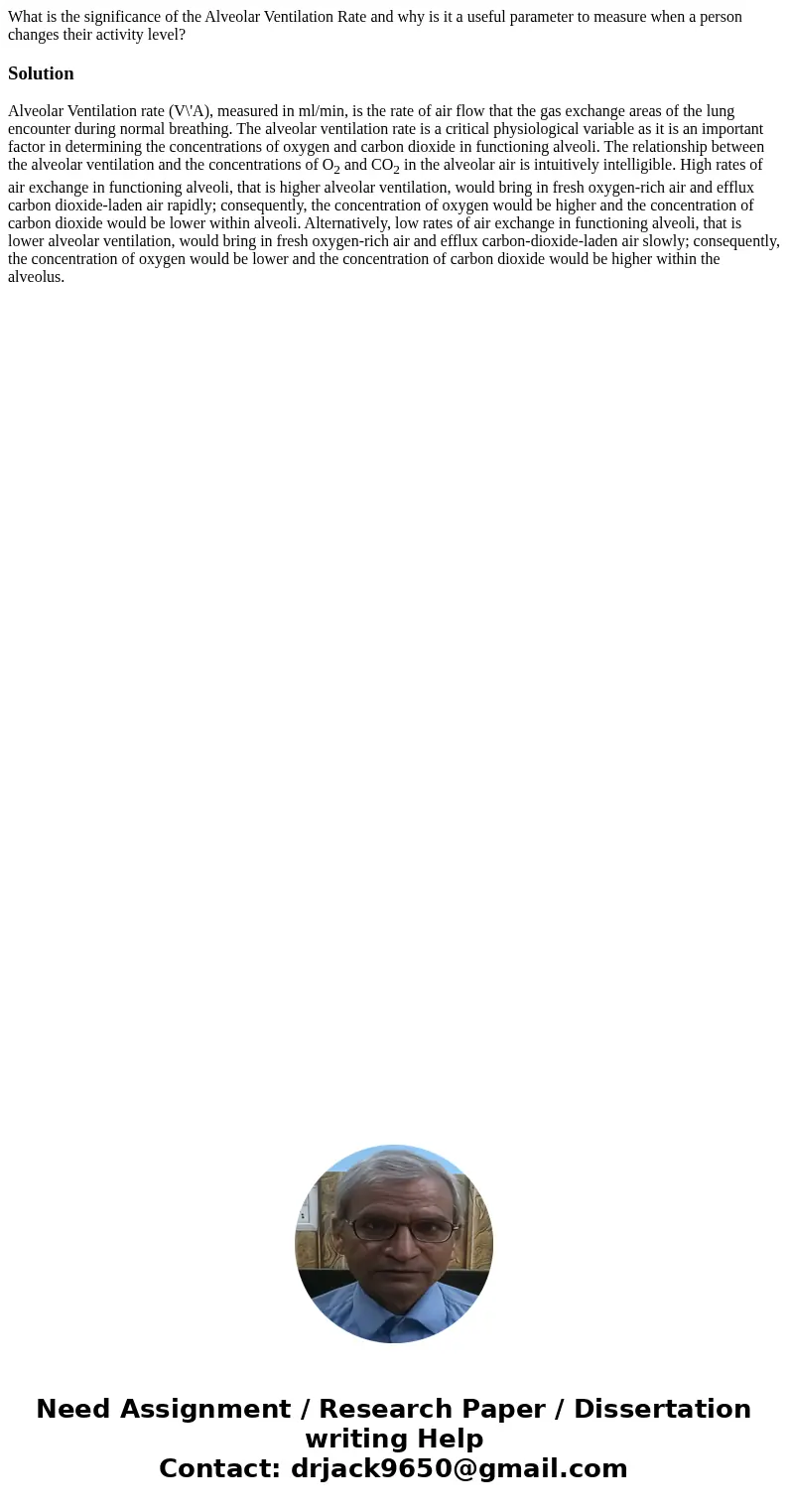What is the significance of the Alveolar Ventilation Rate an
What is the significance of the Alveolar Ventilation Rate and why is it a useful parameter to measure when a person changes their activity level?
Solution
Alveolar Ventilation rate (V\'A), measured in ml/min, is the rate of air flow that the gas exchange areas of the lung encounter during normal breathing. The alveolar ventilation rate is a critical physiological variable as it is an important factor in determining the concentrations of oxygen and carbon dioxide in functioning alveoli. The relationship between the alveolar ventilation and the concentrations of O2 and CO2 in the alveolar air is intuitively intelligible. High rates of air exchange in functioning alveoli, that is higher alveolar ventilation, would bring in fresh oxygen-rich air and efflux carbon dioxide-laden air rapidly; consequently, the concentration of oxygen would be higher and the concentration of carbon dioxide would be lower within alveoli. Alternatively, low rates of air exchange in functioning alveoli, that is lower alveolar ventilation, would bring in fresh oxygen-rich air and efflux carbon-dioxide-laden air slowly; consequently, the concentration of oxygen would be lower and the concentration of carbon dioxide would be higher within the alveolus.

 Homework Sourse
Homework Sourse